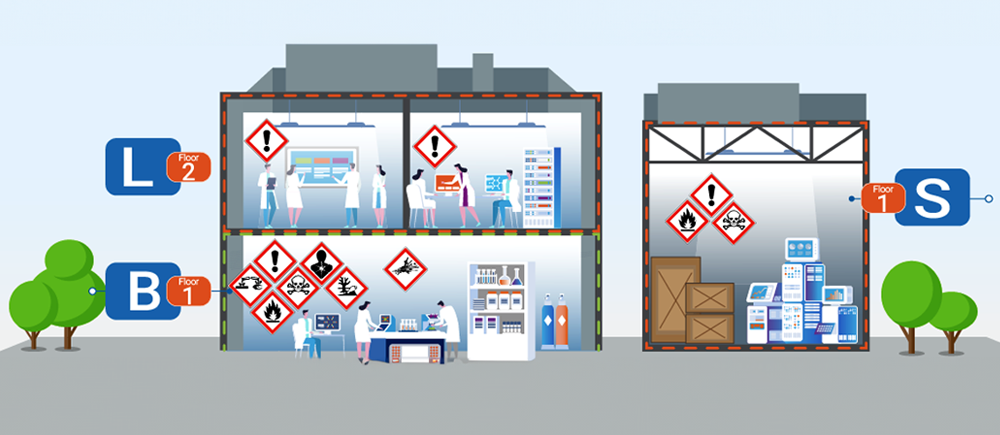What does MAQ stand for?
MAQ is an acronym for maximum allowable quantity and is derived from the fire code.
What are MAQs?
The maximum allowable quantity is an amount of hazardous material(s) that can be stored or used within a specific area in a building. This area is known as a control area.
Where can I obtain a list of hazardous materials?
Substances are classified as hazardous based upon the definitions within the fire code. There are definitions in the international code and there are testing methods identified in NFPA 400, but each state or governmental jurisdiction can apply their own definitions. California did not adopt NFPA 400, for example. You will need to look at the definitions that apply to your specific jurisdiction and look up the values found in public sites such as the Pub Chem website and the Safety Data Sheet that is for your material. RSS has software that evaluates the chemicals based upon their Safety Data Sheets and other reliable resources.
How are MAQs for a building determined?
Maximum allowable quantities are determined by state entities along with fire and building codes.
How are MAQs calculated?
In order to calculate the maximum allowable quantities and see the status of your compliance, start with a complete and accurate chemical inventory. Next, apply the following factors to determine your lab’s MAQ:
- The building & fire code year being applied
- The location of your lab (which floor and control area)
- The occupancy of the control area
- The existence of a complete building fire suppression (sprinkler) system
- The approval of specific chemical hazard class storage
Is there a MAQ in non-sprinklered buildings?
Yes. In general, the MAQ is doubled in a building that is fully sprinklered versus a building that is not fully protected by an automatic fire suppression system.
How do I know if my lab is compliant with MAQs?
The RSS platform can help. The RSS chemical inventory solution can provide each lab with a snapshot of MAQ compliance on the inventory summary page.
What happens if I am unable to comply with the MAQ?
Most institutions have “compliance” as a minimum requirement. The Authority Having Jurisdiction (AHJ) can demand work be stopped in a building until fire code compliance is met.
What happens if I exceed an MAQ?
That depends on the action of the AHJ. Revoking a certificate of occupancy is normally within their control.
Are there different MAQs for different types of buildings?
Yes, MAQs are based on the type of occupancy of a building. Hazard (H) and Business (B) are the most common occupancies. Additional occupancies used for hazardous materials include Laboratory Suites (L), Mercantile (M), and Storage (S).
Do different Authority Having Jurisdictions (AHJ) agree on interpretation when it comes to fire codes and MAQ?
Simply stated, no. Each AHJ can read and interpret nuances of the application with their own expertise.
What is a control area and what makes it different from any other portion of a building?
A control area is one or more room in which hazardous materials are stored, used, or handled. Control areas have specific construction and access requirements in the building and fire codes. In general, they are constructed with firewalls that prevent fire from spreading quickly. Higher hazard occupancies require easy access by fire departments and emergency staff.
How many control areas can be in a building?
The number of control areas allowed depends on multiple factors: the code year of the building, the building’s fire separation construction, the floors relative to grade plane, and the occupancy of each area. For example, the 2001 California Fire Code allowed four control areas for the entirety of B occupancy buildings versus the current code, which allows B occupancy buildings to have up to four control areas on the first floor.
Do the same MAQ rules apply to every organization?
Not always. Different states apply different rules to state institutions versus private ones.
Author

Russ Vernon, Ph.D.
EH&S Business Development Manager
Risk and Safety Solutions

